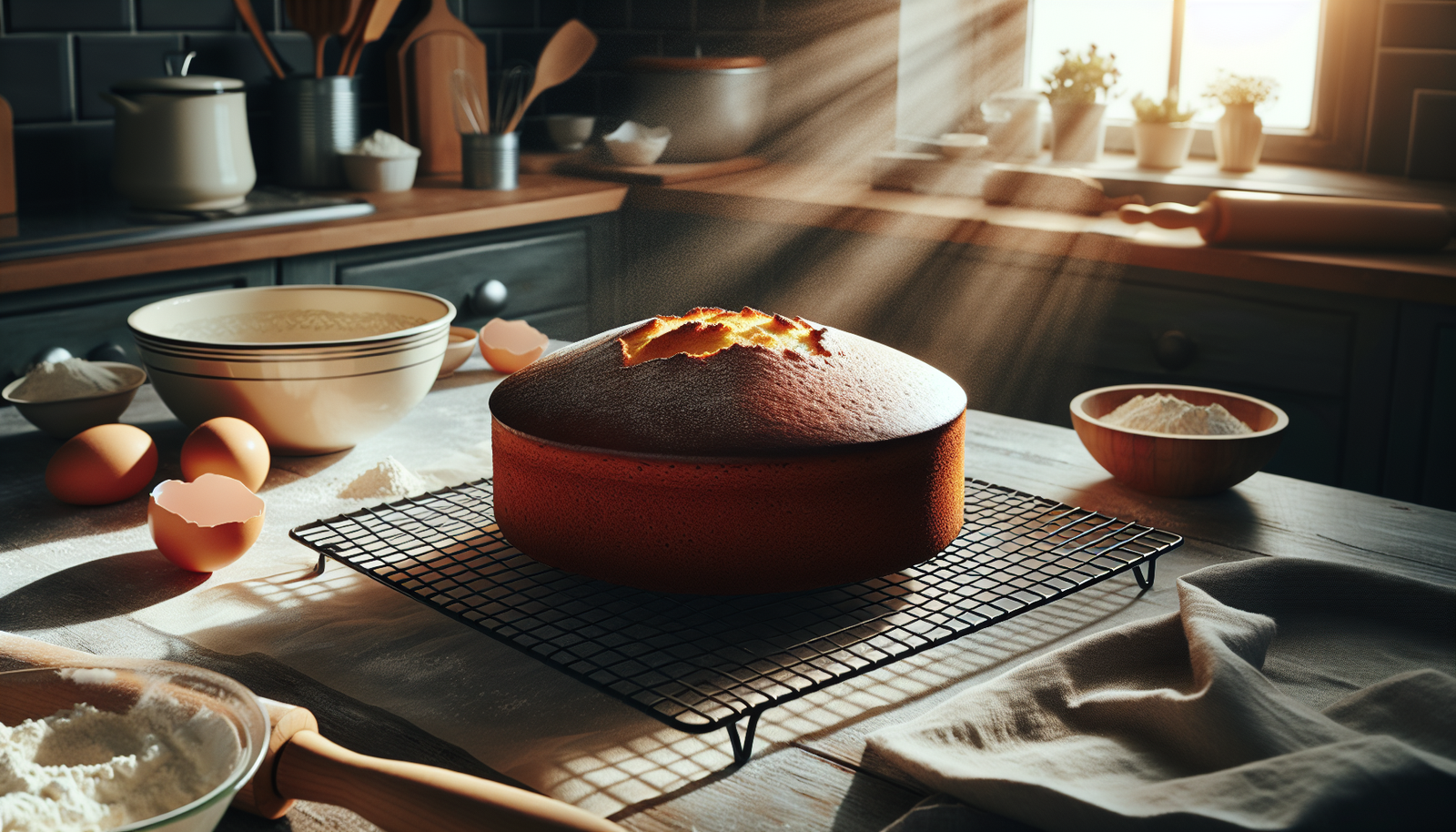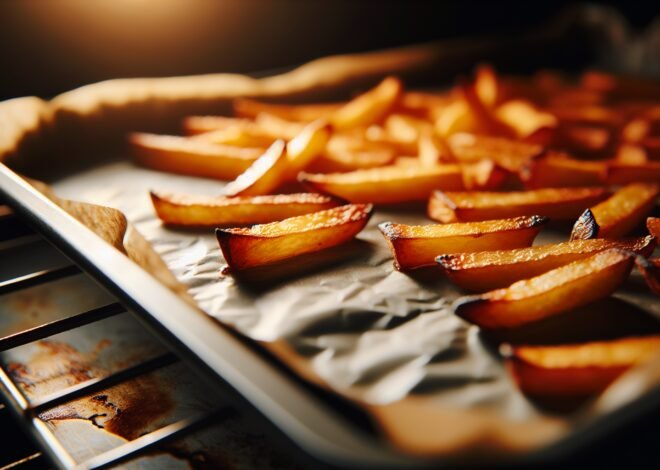
How to Prevent a Cake from Sinking in the Middle
Preventing cake sinking is crucial for a perfectly baked dessert that delights the senses. Did you know that factors like improper mixing or incorrect oven temperature can lead to this baking mishap? Understanding why cakes sink and how to prevent it can save you frustration in the kitchen. This guide will explore common pitfalls such as overmixing batter, using the wrong baking temperature, and not following recipe instructions closely. You’ll also discover expert tips on how to achieve a consistently light and fluffy cake. Keep reading to ensure your cakes rise flawlessly every time.
Common Reasons Why Cakes Sink in the Middle
Understanding the science of baking can help prevent common mishaps like a sunken cake. Many factors contribute to this issue, from oven temperature to ingredient measurements. By exploring these reasons, we can unlock the secrets to perfect cake baking.
Incorrect Oven Temperature and Its Effects on Cake Baking
An off-kilter oven temperature is a major culprit behind cakes sinking in the middle. Baking is a precise science, and even minor temperature deviations affect the cake’s structure. If the oven is too hot, the cake rises too quickly. The outer layer sets before the inside has a chance to cook through. Conversely, a cooler oven leads to underbaking, causing the cake to collapse as it cools.
Using an oven thermometer can help ensure accuracy. Many ovens have built-in thermostats that are slightly off, leading to inaccurate readings. Position the thermometer in the middle of the oven for the most reliable result. Adjust the temperature accordingly, especially for recipes requiring precise heat.
Additionally, avoid opening the oven door too frequently. Each time it opens, heat escapes, causing fluctuations. This can disrupt the baking process, resulting in an uneven rise. Instead, use the oven light to check progress and only open the door when necessary, such as when rotating the cake halfway through baking.
Overbeating the Batter: Causes and Consequences
Overbeating the batter introduces too much air, leading to a fragile cake structure. When beaten excessively, the batter becomes overly aerated, similar to a soufflé. This might cause the cake to rise in the oven, but it lacks the strength to maintain its height. As the cake cools, the excess air escapes, causing the middle to collapse.
To prevent overbeating, combine ingredients gently. Use a low-speed setting on your mixer, or better yet, mix by hand. Watch for signs of readiness, such as when the batter becomes smooth and just combined. Avoid being tempted to overmix in pursuit of a perfectly smooth batter. A few lumps are acceptable and often disappear during baking.
When incorporating eggs, add them one at a time, mixing gently between each addition. This prevents the batter from becoming too airy. Also, fold in dry ingredients with a spatula rather than using a mixer. This technique helps maintain a stable texture without compromising the cake’s integrity.
Importance of Proper Ingredient Measurements
Accurate measurements are pivotal in baking. Even small deviations can lead to a sunken cake. Too much liquid, for instance, makes the batter too heavy, preventing it from rising properly. Meanwhile, excess flour results in a dense cake that lacks the necessary moisture to rise.
To ensure precision, use a kitchen scale for measuring dry ingredients. This method is more accurate than measuring cups, which can vary based on how packed the ingredients are. When measuring liquids, use a clear measuring cup and check at eye level to ensure accuracy.
Consider the balance of leavening agents like baking soda or baking powder. These ingredients are essential for giving the cake its lift. However, too much can cause the cake to rise too quickly, then collapse. Use exactly what the recipe calls for and ensure the freshness of these ingredients. Baking soda and baking powder lose potency over time, so replace them regularly.
Essential Tips to Prevent Cake Sinking
Prevention is the best way to ensure a cake rises and stays risen. By following some key baking techniques, you can create a stable structure that resists sinking. These tips will guide you through the process of achieving a perfectly baked cake every time.
Best Practices for Preheating Your Oven
Preheating the oven sets the stage for successful cake baking. It ensures that your cake starts baking at the correct temperature from the moment it’s placed inside. Start by turning on the oven early, allowing ample time for it to reach the desired temperature fully. This step is crucial for even baking, preventing the cake from rising too quickly or unevenly.
To verify the oven’s temperature, use an oven thermometer. Place it in the center to get an accurate reading. This tool is invaluable, ensuring you’re baking at the right temperature, especially if your oven’s built-in thermostat is unreliable. Adjust the temperature as needed, ensuring a precise and stable baking environment.
Consider positioning your cake on the middle rack. It’s the sweet spot for even heat distribution. Cakes baked too high might brown too quickly on top, while those baked too low may have an undercooked bottom. Keeping the cake centered allows for consistent heat circulation, contributing to a balanced bake.
How to Combine Ingredients for a Stable Batter
A stable batter is the foundation of a successful cake. The way ingredients are combined affects the cake’s texture and ability to rise. Begin by creaming the butter and sugar thoroughly. This step incorporates air into the batter, which helps the cake rise evenly.
Add eggs one at a time, mixing until just combined. This method prevents over-aeration, which could cause the cake to deflate. When it’s time to incorporate dry ingredients, sift them first. Sifting breaks up lumps and ensures a uniform consistency, leading to a smoother batter.
Fold dry ingredients into the wet mixture gently. Avoid using a mixer at this stage, as it can overwork the batter. Instead, use a spatula or wooden spoon, making sweeping motions to incorporate without deflating the batter. This gentle touch preserves the air and creates a stable mixture.
Adjusting Baking Times for Different Cake Types
Different cakes require different baking times, and understanding these nuances helps prevent sinking. Dense cakes, like pound cakes, need longer baking times at a lower temperature to cook through without over-browning. Lighter cakes, such as sponge cakes, might bake at higher temperatures for shorter periods.
Refer to your recipe for guidance, but also use visual cues. A cake should be golden brown, with edges pulling slightly away from the pan. A toothpick inserted in the center should come out clean or with a few crumbs clinging to it.
For more accuracy, consider the type of pan used. Dark pans absorb more heat, often requiring slightly lower temperatures or shorter baking times. Light pans reflect heat, which might need a bit more time. Adjusting based on these factors ensures your cake is baked to perfection without the risk of sinking.
Troubleshooting Techniques for Sinking Cakes
Even with the best preparation, cakes can sometimes sink. Troubleshooting helps identify and fix issues quickly. With these techniques, your cake can go from a sunken disappointment to a delicious masterpiece.
Checking for Doneness to Avoid Undercooking
Ensuring your cake is fully baked prevents it from sinking as it cools. Undercooked cakes often collapse, as the structure hasn’t set. A toothpick test is a classic method; insert it into the center, and if it comes out clean or with a few crumbs, the cake is done.
Another method is the bounce-back test. Gently press the center of the cake with a finger. If it springs back completely, it’s likely done. If it leaves an indentation, it needs more time in the oven.
Pay attention to baking time as a guideline, but rely on physical cues. Ovens vary, and baking conditions can affect timing. Trust your senses to guide you to a fully baked cake.
How to Properly Cool and Store Cakes
Proper cooling is key to maintaining a cake’s structure. Let the cake rest in the pan for 10-15 minutes after removing it from the oven. This allows the structure to stabilize. Afterward, transfer it to a wire rack to cool completely, promoting even air circulation.
Avoid covering the cake while it’s still warm, as trapped steam can lead to sogginess. Once fully cooled, wrap it in plastic wrap or store it in an airtight container. This prevents it from drying out while preserving its flavor and texture.
For long-term storage, consider freezing. Wrap the cake tightly in plastic wrap, then in aluminum foil, and place it in the freezer. This method keeps the cake fresh for months. Thaw it slowly in the fridge when ready to enjoy, ensuring it retains its original taste and texture.
Rescuing a Sunken Cake: Creative Solutions and Ideas
A sunken cake doesn’t have to be a lost cause. With some creativity, it can become a delightful treat. One option is to turn it into a trifle. Layer pieces of the cake with whipped cream, berries, and custard in a glass dish for an impressive dessert.
Another approach is to frost strategically. Use icing to fill in the sunken center, creating an even surface. Decorate with fresh fruit or edible flowers to distract from any imperfections.
Consider creating cake pops or cake balls. Crumble the cake, mix with frosting, and shape into balls. Dip in chocolate or roll in sprinkles for a fun, bite-sized treat. This method not only salvages the cake but also offers an opportunity to try something new and exciting.
These solutions show that even when baking goes awry, there’s always a way to turn it around and still impress with your dessert.
Conclusion
Cake sinking can be prevented by adjusting the baking temperature and duration. Ensuring all ingredients are at room temperature before mixing helps maintain batter consistency. Properly creaming the butter and sugar can add necessary air into the mix. Avoid opening the oven door too early, which can cause a rapid loss of heat and affect cake structure. Using the correct amount of leavening agents and mixing the batter adequately without over-mixing is also crucial.
FAQ
Why does my cake sink in the middle after baking?
Several factors can cause cakes to sink in the middle. Underbaking often leads to this issue as the center remains uncooked. Adding too much baking powder or soda can cause the cake to rise too quickly and then collapse. Additionally, opening the oven door too frequently can affect the baking process, leading to a sunken center.
How can I prevent my sponge cake from collapsing?
Ensure accurate measurements when mixing ingredients to prevent sponge cakes from collapsing. Be gentle when folding in flour to maintain the airiness crucial for sponges. Also, avoid over-mixing the batter, as this can deflate the air bubbles, causing the cake to collapse.
What baking techniques stop cakes from sinking?
Consistent oven temperature is crucial. Preheat your oven properly and avoid opening the door during baking. Use room temperature ingredients for even mixing. Properly cream butter and sugar to incorporate air, providing structure and stability to your cake.
What ingredients help stabilize a cake batter?
Ingredients like eggs and flour provide structure to cakes. Eggs act as a binding agent, while flour gives stability. Using the right amount of leavening agents like baking powder or soda, in combination with acid like buttermilk, ensures even rising.
How do oven temperature fluctuations cause cake sinking?
Fluctuating temperatures can cause uneven cooking, leading to cake sinking. If the oven is too hot, the cake may rise rapidly and then collapse. A too-cool oven might not cook the cake all the way through. Consistent temperature helps cakes bake evenly, preventing sinking.
What are common baking mistakes that lead to cake sinking?
Common mistakes include over-mixing the batter, using expired leavening agents, and not adjusting for altitude changes. Incorrect oven temperatures and recipe deviations can also cause cakes to sink. Following the recipe closely and understanding ingredient functions can mitigate these issues.











